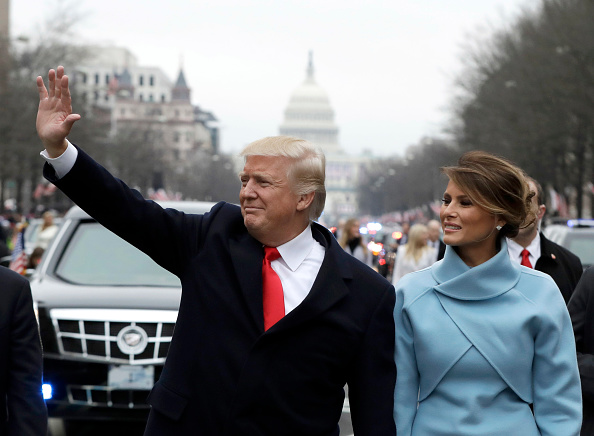
As part of upcoming budget cuts, Donald Trump reportedly plans to eliminate the National Endowment for the Arts and the National Endowment for the Humanities and privatize the Corporation for Public Broadcasting. This would have devastating consequences for our society; for our cultural diversity; and for the many economies that are connected to promoting cultural heritage, innovation and production, both domestically and abroad. So we might ask how the arts have personally enriched the President.
Let’s start just days ago, when Melania Trump presented a signature teal Tiffany & Co. box to Michelle Obama. The jewelry company is known for its items of the highest craftsmanship. And where does that come from? Artisans. Louis Comfort Tiffany, son of one of the company’s founders, is best known for his stained-glass windows and lamps. Those windows and lamps, not to mention priceless jewelry, are in museums–museums that receive public funding. Tiffany & Co. is located on Fifth Avenue–the same avenue that features Trump Tower as well as Museum Mile, where the Guggenheim and the Met live. Trump’s buildings neighbor Jazz at Lincoln Center. As President Trump knows, location, location, location is everything. So shall we eliminate the funding of these landmarks that make his holdings infinitely more valuable–or valuable at all?
Trump’s son-in-law owns real estate in New York City’s East Village, a thriving and profitable spot for him, thanks to the years of sweat of artists and generations of multicultural workers and nonprofit institutions in theater, art, dance, music and literature.
All across America, through the promotion of the arts, neighborhoods create job growth and development.
Ivanka Trump and her husband collect art. Many of these artists’ works are in public museums; many likely started out exhibiting in emerging galleries. These artists then generate value as part of an art market whose value (and collectors) depend on support for innovation and experimentation.
Let’s not stop there. Reality television didn’t happen in a vacuum: it got its start with An American Family, a PBS documentary series from 1973. The Apprentice owes its success to original programming by the Corporation for Public Broadcasting and to the cinema verité style used by filmmakers and video artists who were supported by publicly funded programs.
And there’s the First Lady. Melania Trump came to this country working as a fashion model. The Fashion Institute of Technology not only has a museum, but also trains the very people who create the pieces of clothing she buys off the rack or has custom-designed. Shall we eliminate public support of designers? Fashion Week brings income and jobs to America.
Melania Trump seems to be trying to channel Jacqueline Kennedy Onassis as a role model. Besides dressing the part, Mrs. Trump would need to be a champion for the arts and an advocate for cultural and historic preservation. One of Mrs. Onassis’ triumphs was her role in fighting to preserve the Grand Central Terminal in New York City from demolition. Adjacent to the GCT is the now Grand Hyatt New York–Trump’s first big development in Manhattan in 1980, just five years after Mrs. Onassis began her mission to save the terminal. I hope that Mrs. Trump could take on supporting and expanding the NEA.
To have a National Endowment for the Arts is to sanction creativity, to provide space to support the poetic and to give meaning to struggle, hope and life. Whether it’s transcribing Great Negro Spirituals, protecting indigenous Native languages, attending outdoor jazz concerts, preserving quilting by the Amish and the Gee’s Bend women, singing the Delta blues, weaving narratives of neglected LGBTQ history, creating plays of the immigrant experience or collaborating across state lines, we are a country of expression. Art is the bridge when walls of fear keep us insulated and reactive. A society loses meaning, purpose and direction without it.
Finley, a performance artist and a professor at New York University, was a plaintiff in the National Endowment for the Arts v. Finley, after the NEA vetoed her grant in 1990
More Must-Reads from TIME
- Cybersecurity Experts Are Sounding the Alarm on DOGE
- Meet the 2025 Women of the Year
- The Harsh Truth About Disability Inclusion
- Why Do More Young Adults Have Cancer?
- Colman Domingo Leads With Radical Love
- How to Get Better at Doing Things Alone
- Michelle Zauner Stares Down the Darkness
Contact us at letters@time.com